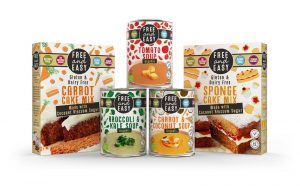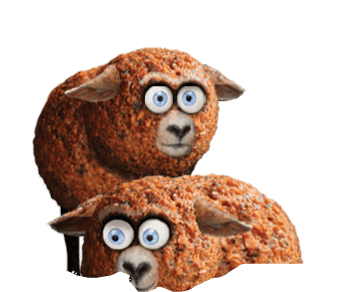Food packaging design is one of the last things considered when it comes to the marketing mix but probably the most important.
After all, standing out on shelf is the final hurdle in vying for the attention of consumers. In the build up to launch or reinventing a new product, we set out a marketing plan involving advertising, PR events, social media and other initiatives but many brands seem to loose sight of the product itself and the design of the package. So when do you really know it’s time to reevaluate and update your food packaging design and graphics? What are the rules? Here are five signs telling you that it’s time to update and some of the pitfalls to avoid.
1. It’s been 5 years since your food packaging design was refreshed
Five years is a considerable amount of time for food packaging to remain unchanged. Consumers get used to seeing the ‘same ole same ole’. It’s time to freshen things up – cause a stir and grab their attention again. Within that time, the product category itself and the company in terms of the brand have evolved so it makes sense that product/s should follow suit. An update should not be made for the sake of change or a fleeting trend. Marketers and designers should collaborate to carefully and respectfully re-design the package design with the aim of tying it closely to a strategic positioning that is relevant to the consumer. When all is said and done, brands want sales. Products need to fly off shelf. Company employees need to get paid and the company cogs need to keep turning.
2. The competition is ever evolving
As mentioned, five years in FMCG is a long time (most notably in the food industry) for some brands to sit still, especially if you want your brand to be positioned as a category leader. At the beginning of any design initiative, it is important to evaluate what has changed and who has changed. So it’s a good idea to track competitors in real-time. Tracking is critical to understanding the trends and agility of any competitor as it’s important to understand the strengths and weaknesses of your competition and when to strike before any decisions are made.
3. Consumers are getting smarter
Consumer research can be extremely insightful, signalling when to change and why. Consumers are getting smarter, much smarter. Many moons ago, when supermarkets didn’t exist it was an easy playing field. Premier Supermarkets, a subsidiary of Express Dairies, opened the UK’s first supermarket in Streatham, South London in 1951. Back in the day, competition was minimal but fast forward to now-time and we’ve got a brand war going on – on every shelf, in every supermarket. Over the years, consumers have become extremely savvy, they know the game and how to play it. They recognise a sales pitch even under the best disguise. So what age group is the best to study? It has to be millennials, they are the instigators and the drivers of change. Given the group’s size and increasing spending prowess, millennials are the consumers on the cutting edge of new things. This is the group that sets new trends and those that are emerging in the food industry include ready meals, fresh meal kits and other online food services. This group are changing their eating habits – they like to eat out more but then they also want convenience and they want to know more about their food, how it is made and where it comes from. They are hungry for information and demand transparency from companies. Millennials are more likely to read the information on the labelling and packaging. Integrating food into their lifestyles requires management and this demographic are pushed for time.
4. Retailers are demanding change
Now more than ever, we hear that retailers are demanding change. It could be argued this is an ugly development. However, retailers are under increasing pressure to delight consumers within aisles, especially in the centre of the store. With increasing category growth and brands competing for the same retail space, categories and entire aisles have become so fragmented. They are overwhelming and could benefit from clear banner brands. The change, if addressed correctly, could be as simple as basic design housekeeping, not a drastic overhaul. Try to understand what the retailer is seeing, take an objective point of view. See the shelf through their eyes.
5. Your brand has got lost or just wandered off
Every brand should continually look in the mirror and question why the food packaging details exist. The information contained, how it’s displayed. Too much text and consumers won’t read it. Too little will also have the same effect – consumers want to know what’s in their ready meal. Is the information still valid, has it changed? Does the consumer recognise them, value them and better yet, relate them to what you intended in the first place? The brand message on a package is often diluted little by little with small changes over time, but it’s hard to see without taking a step back. Packaging is an important – if not the most important – part of the marketing mix for many consumer goods products. Treat it that way. Be on the lookout for signs that it’s time to update. And when the time is right, make a good job of your food packaging because it will be another 5 years or so until you will probably do it again.
For further information contact marketing on +44(0)1284 749144.

Free and Easy attract consumers with their bold, healthy and informative designs…
Pemberton & Whitefoord designed Free & Easy’s new free-from cake mix and soup ranges.
